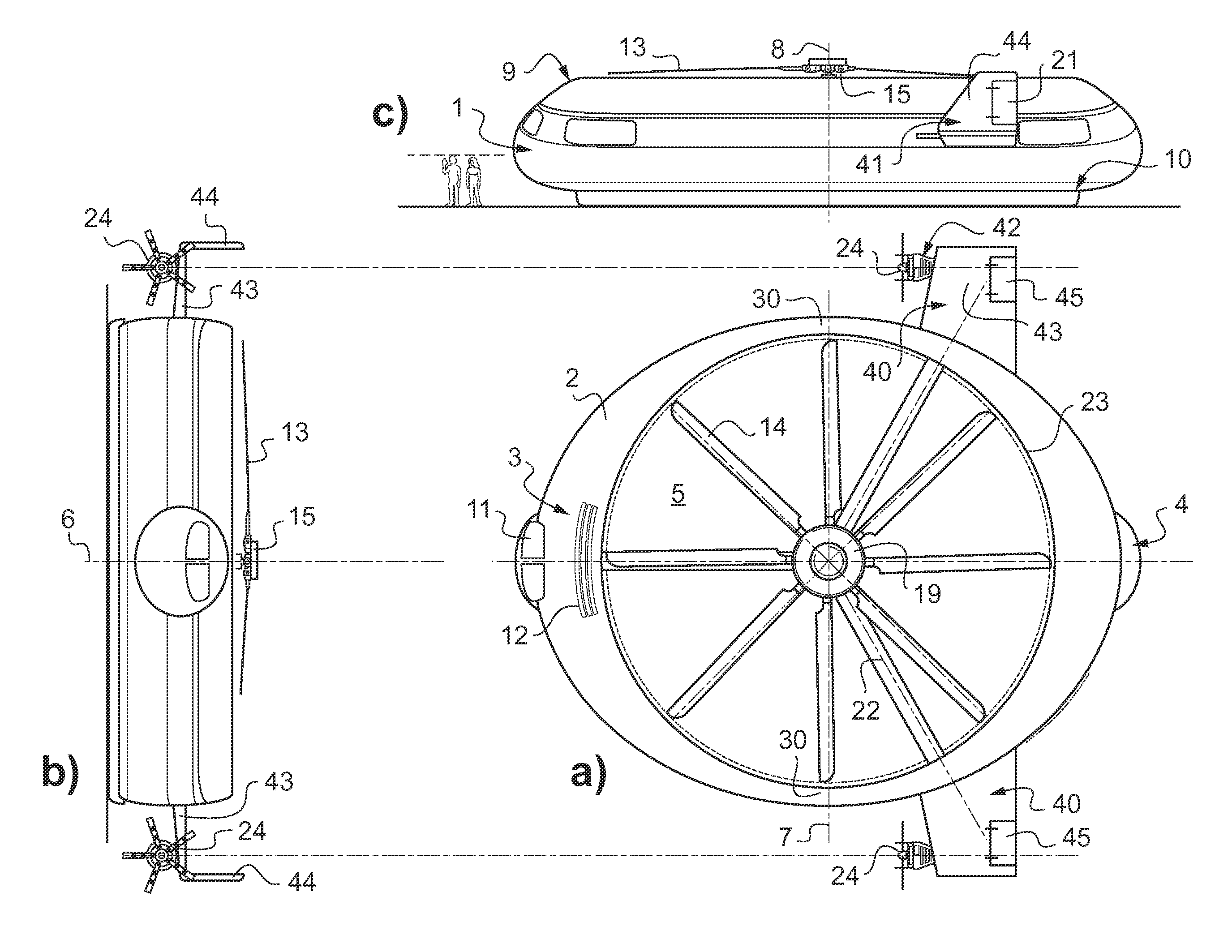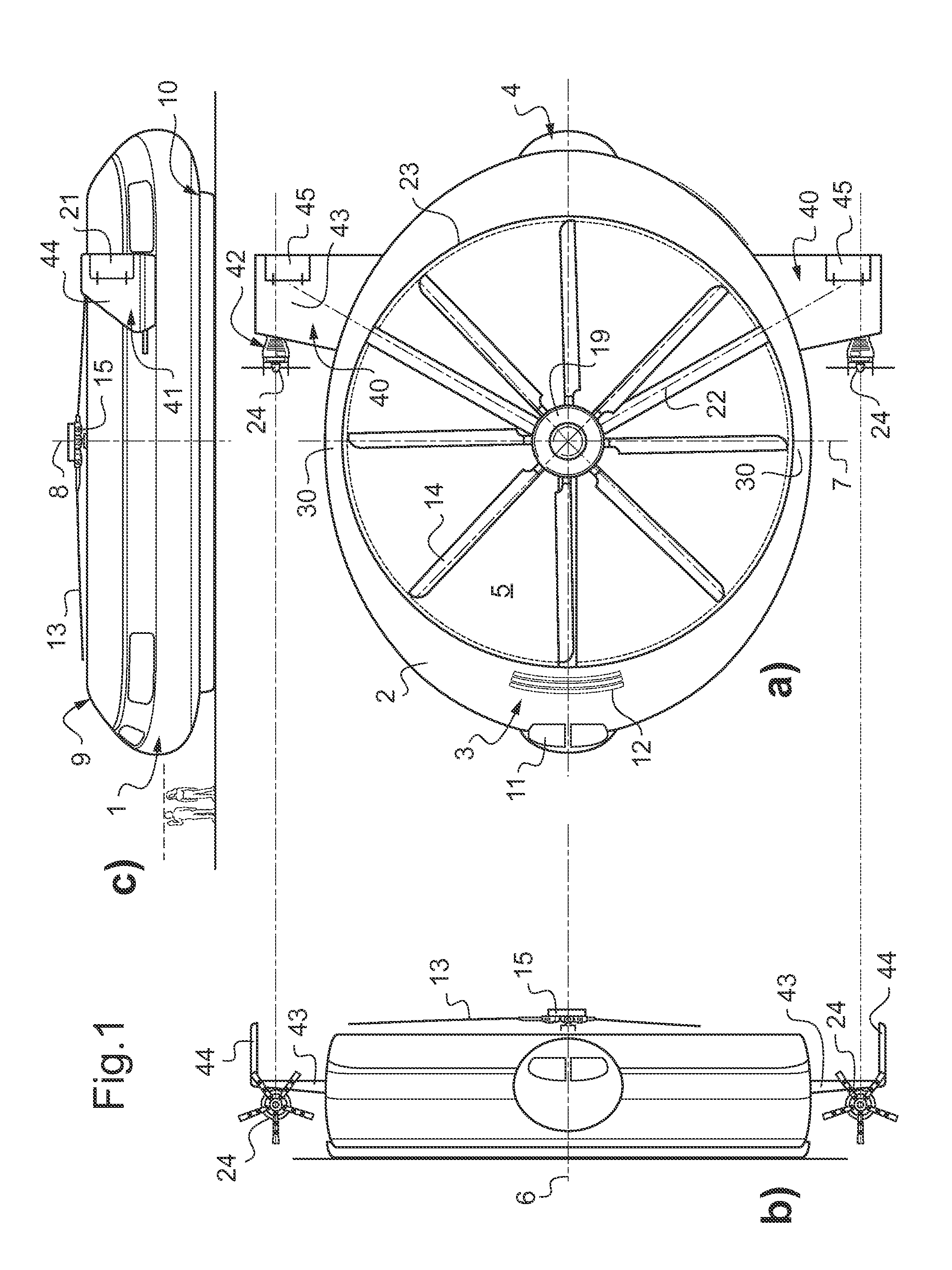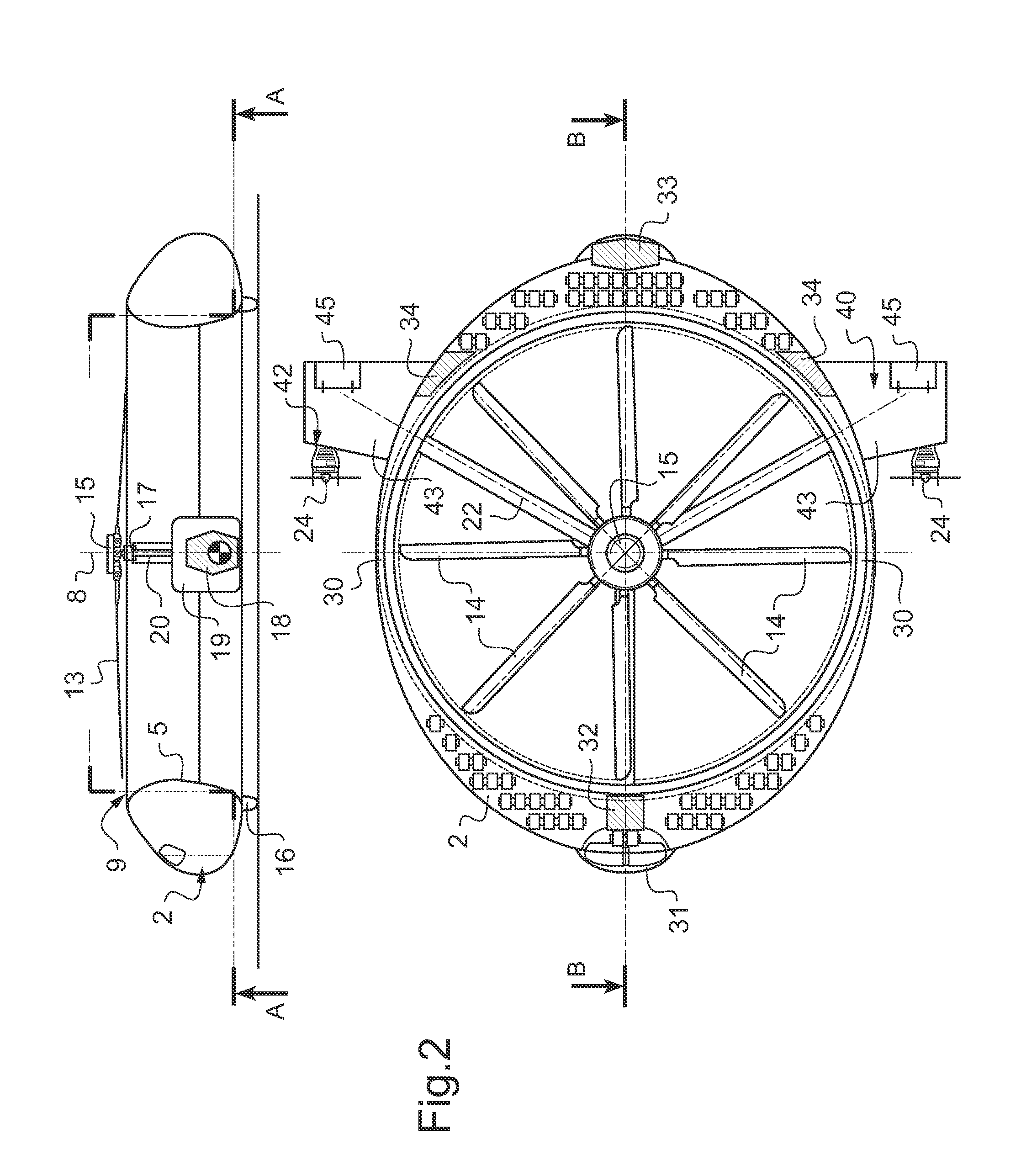Vertical take-off and landing (VTOL) aerial vehicle and method of operating such a vtol aerial vehicle
a technology of vertical take-off and landing and aerial vehicles, which is applied in the direction of vertical landing/take-off aircraft, rotorcraft, vehicles, etc., can solve the problems of large, unobstructed field of view, etc., and achieve the effect of increasing flow speed, system lift, and increasing thrus
- Summary
- Abstract
- Description
- Claims
- Application Information
AI Technical Summary
Benefits of technology
Problems solved by technology
Method used
Image
Examples
Embodiment Construction
[0043]According to FIG. 1a, 1b, 1c and 2 an aerial vehicle 1 comprises a torus-type or toroidal fuselage 2 with a front portion 3 and a rear portion 4. A generally horizontal plane of the aerial vehicle 1 is defined by a longitudinal 6 and a transversal axis 7 with a central axis 8 perpendicular to said plane. A duct 5 is formed through the torus-type fuselage 2 and extends essentially coaxial to said central axis 8 from a top 9 to a bottom 10 radial inside of the torus-type fuselage 2. The torus-type fuselage 2 is aerodynamically formed like a shroud in order to provide an optimum airflow stream through the duct 5 and around the fuselage 2.
[0044]Inside the torus-type fuselage 2 is a cabin to transport passengers and cargo. The front portion 3 of the fuselage 2 contains the cockpit 31 and galley 32 compartments. Windshields and windows 11 of the cockpit 31 result in a large, unobstructed field-of-view for pilots inside the cockpit 31. A standard entry (not shown) into the cockpit 31...
PUM
 Login to View More
Login to View More Abstract
Description
Claims
Application Information
 Login to View More
Login to View More - R&D
- Intellectual Property
- Life Sciences
- Materials
- Tech Scout
- Unparalleled Data Quality
- Higher Quality Content
- 60% Fewer Hallucinations
Browse by: Latest US Patents, China's latest patents, Technical Efficacy Thesaurus, Application Domain, Technology Topic, Popular Technical Reports.
© 2025 PatSnap. All rights reserved.Legal|Privacy policy|Modern Slavery Act Transparency Statement|Sitemap|About US| Contact US: help@patsnap.com



